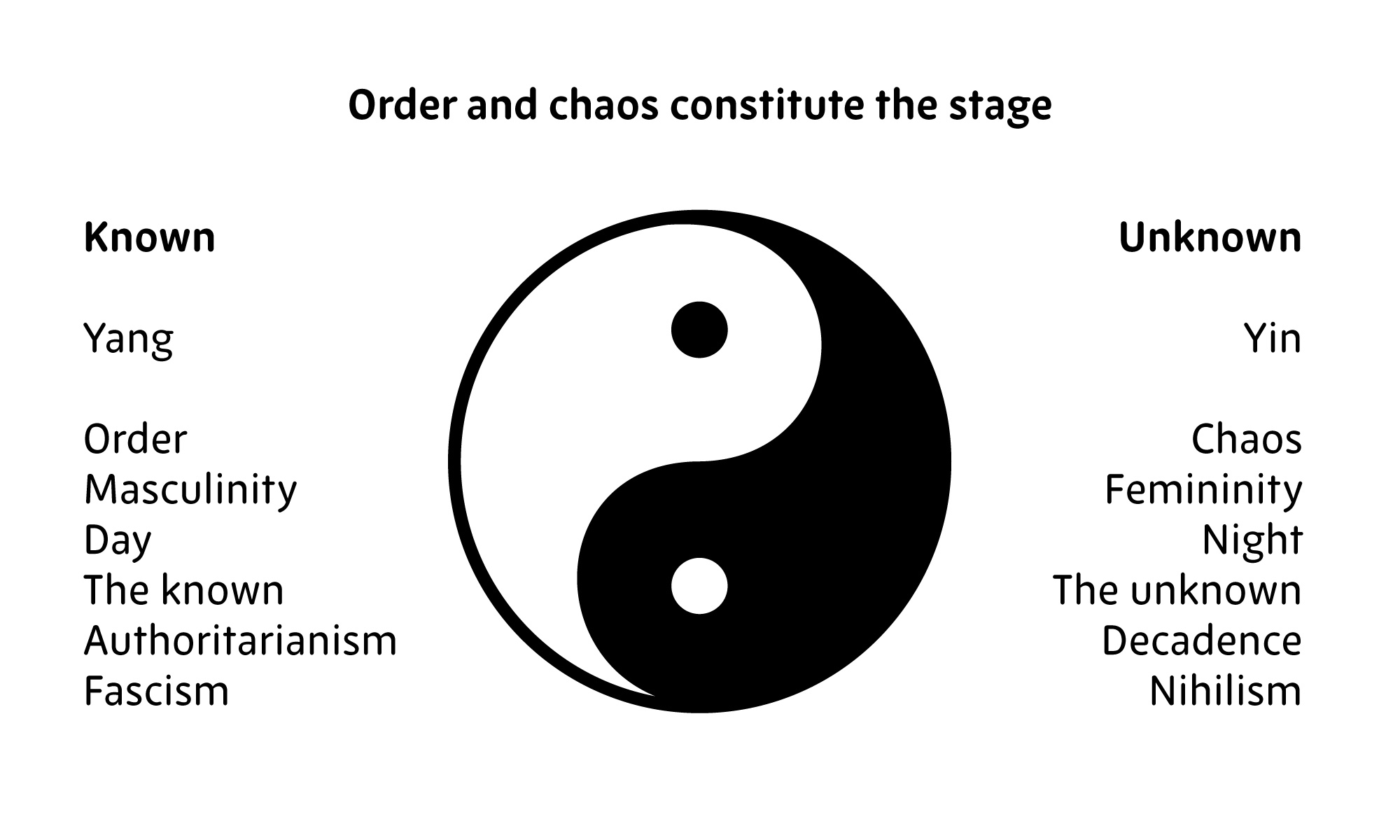
So there is balance, but the relationship goes beyond balance to one of harmony. It can do this because Yang is present in Yin. The truth is Yin can transform into Yang under certain conditions. There is Yin, but interestingly, Yin is also Yang because it contains some Yang. In the Chinese Yin-Yang model, Yin (the black) contains a seed of Yang (in the form of a white dot). For example, day is Yang, yet within every day is a Yang part-the early morning, and a Yin part-late day, as it begins to turn to night, which is Yin. The designation of something as Yin or Yang is always relative to some other thing. No matter where you bisect the diameter of the whole circle, each half will always contain some Yin and some Yang.

The small dots within each of the two energies (represented by black and white) symbolize that there is always some Yin (black) within Yang (white) and vice versa. This inseparable and interpenetrating relationship is reflected in the form of the Yin-Yang symbol. Both create a totality, a complete whole. (Night is Yin and day is Yang.) Night looks and is very different than day, yet it is impossible to have one without the other. For example, night and day form a Yin-Yang pair. Yin and Yang cannot exist without the other they are never separate. What does this really mean? Although they are totally different-opposite-in their individual qualities and nature, they are interdependent. They are two opposite yet complementary energies. What Yin-Yang points to and represents is so vast it encompasses everything in the Universe.Įverything contains Yin and Yang. Like Einstein’s famous equation, E = mc2, the Yin-Yang symbol describes something very elemental and incredibly complex.

As far as symbols go, it just doesn’t get more fundamental than Yin-Yang. This symbol, which most people have seen in a variety of contexts, pares things down to one clear and elegant image.


 0 kommentar(er)
0 kommentar(er)
